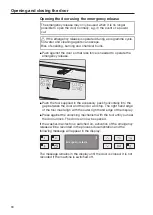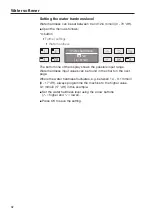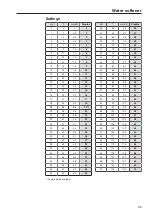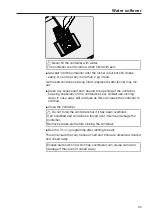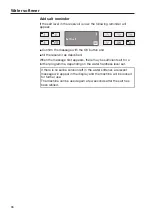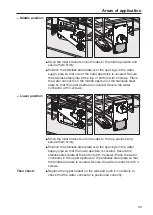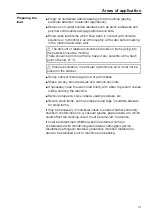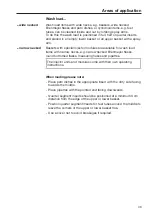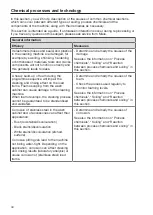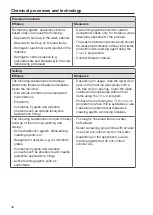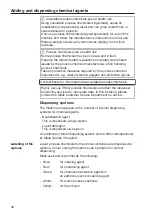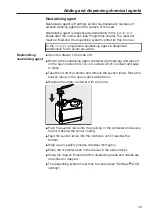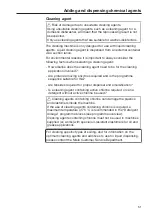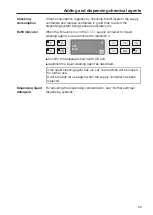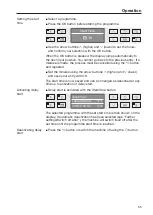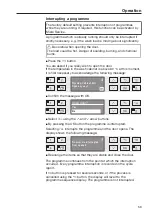
Chemical processes and technology
44
In this section, you will find a description of the causes of common chemical reactions
which can occur between different types of soiling, process chemicals and the
components of the machine, along with their remedies as necessary.
This section is intended as a guide. If unforeseen interactions occur during reprocessing or
if you have any queries on this subject, please seek advice from Miele.
General information
Efficacy
Measures
If elastomers (hoses and seals) and plastics
in the cleaning machine are damaged, for
example by swelling, shrinking, hardening
or brittleness of materials, tears and cracks,
components will not function correctly and
this generally leads to leaks.
- Determine and remedy the causes of the
damage.
See also the information on “Process
chemicals”, “Soiling” and “Reaction
between process chemicals and soiling” in
this section.
A heavy build-up of foam during the
programme sequence will impair the
cleaning and rinsing effect on the load
items. Foam escaping from the wash
cabinet can cause damage to the cleaning
machine.
When foam develops, the cleaning process
cannot be guaranteed to be standardised
and validated.
- Determine and remedy the causes of the
foam.
- Check the process used regularly to
monitor foaming levels.
See also the information on “Process
chemicals”, “Soiling” and “Reaction
between process chemicals and soiling” in
this section.
Corrosion of stainless steel in the wash
cabinet and of accessories can affect their
appearance:
- Rust (red stains/discolouration)
- Black stains/discolouration
- White stains/discolouration (etched
surface)
Corrosive pitting can lead to the machine
not being water-tight. Depending on the
application, corrosion can affect cleaning
and rinsing results (laboratory analysis) or
cause corrosion of (stainless steel) load
items.
- Determine and remedy the causes of
corrosion.
See also the information on “Process
chemicals”, “Soiling” and “Reaction
between process chemicals and soiling” in
this section.

